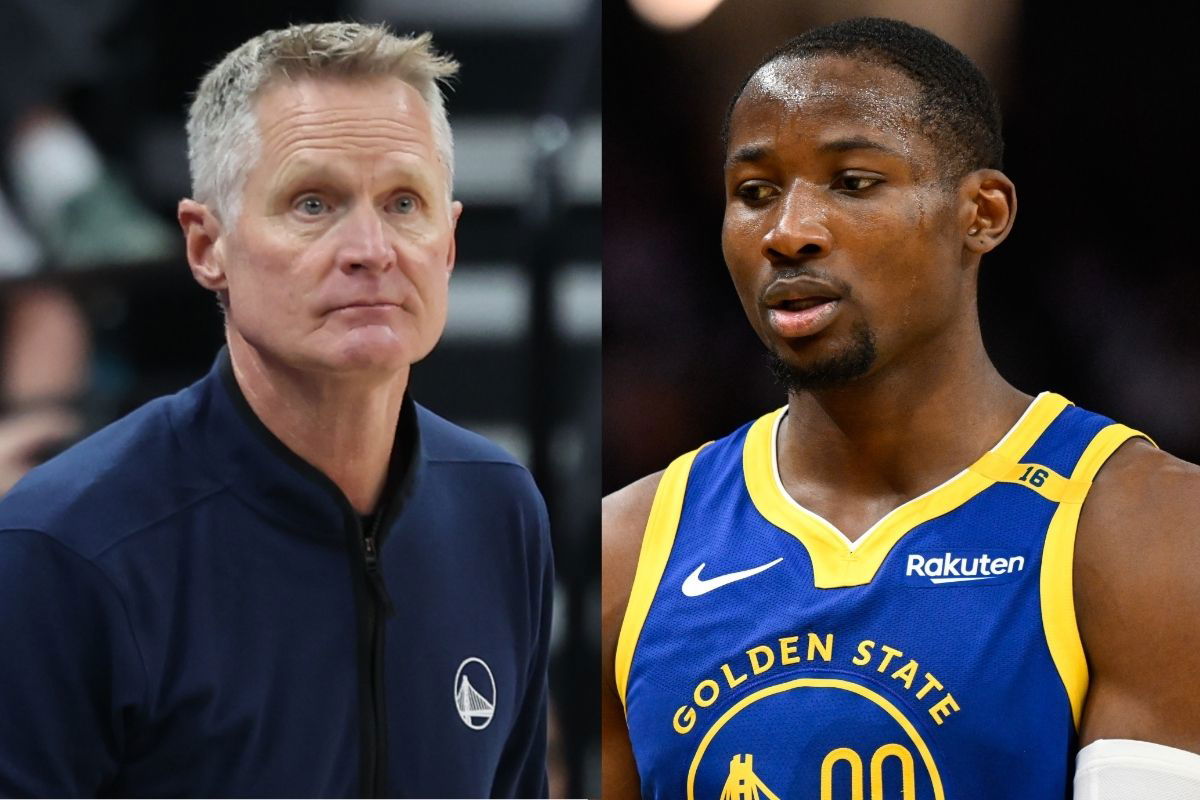
Imago
Image Credits: Imagn

Imago
Image Credits: Imagn
The Golden State Warriors are in a public standoff with young forward Jonathan Kuminga, and the friction is stretching beyond a contract impasse and into the locker room. The team’s decision to prioritize veteran lineups since acquiring Jimmy Butler has created a tense dynamic, prompting Kuminga’s teammate to publicly address the issue.
Watch What’s Trending Now!
On 95.7 The Game, Brandin Podziemski made a powerful statement that both defended Kuminga and highlighted the ongoing tension with head coach Steve Kerr. “No matter how [Kuminga]’s situation is resolved, it doesn’t change how we view JK as a person, as a player. Obviously we all want him to be in Golden State. It doesn’t change anything,” Podziemski said.
Podziemski’s words reveal a clear disconnect between the team’s developmental young core and the front office’s win-now mentality. The arrival of Butler, a proven veteran meant to stabilize Golden State’s fading contention window, has eaten into Kuminga’s minutes and complicated his role. Lineups with Butler and Kuminga averaged a -7.1 rating differential last season, and Steve Kerr stated, “The lineup with Jimmy, Draymond, and JK doesn’t fit.” As a result, Kuminga’s minutes per game dropped from 26.0 to just 20.8.
ADVERTISEMENT
“No matter how [Kuminga]’s situation is resolved, it doesn’t change how we view JK as a person, as a player. Obviously we all want him to be in Golden State. It doesn’t change anything.”
– Brandin Podziemski on JK’s offseason (via @WillardAndDibs).
🎧 https://t.co/43NpgJhquJ pic.twitter.com/WZdao41wIL
— 95.7 The Game (@957thegame) August 27, 2025
How much longer can the Warriors keep this simmering before it boils over? The front office has yet to deliver the contract Kuminga believes he’s earned, nor have they offered clarity on the role he craves: a role that seems to shrink each time Butler is prioritized in crunch-time lineups. This on-court friction is at the heart of the Warriors’ contract standoff.
ADVERTISEMENT
The contract stalemate and a shrinking role
Here are the actual mechanics: Golden State tendered Kuminga a $7.9 million qualifying offer in late June, making him a restricted free agent. League reporting says the team put a two-year, $45 million proposal on the table with a team option in Year 2 and, crucially, asked Kuminga to waive the implicit no-trade veto that would otherwise attach in certain one-year scenarios. Kuminga’s camp countered with a three-year, $82 million framework. He has until October 1 to accept the QO; otherwise, the sides can keep negotiating or explore sign-and-trade pathways.

Imago
Apr 9, 2025; San Francisco, California, USA; Golden State Warriors forward Jonathan Kuminga (00) dribbles upcourt against the San Antonio Spurs in the second period at Chase Center. Mandatory Credit: David Gonzales-Imagn Images
The timing intersects directly with the role. After the Warriors traded for Jimmy Butler in February 2025 and quickly secured him on a short-term max extension, Kerr leaned into veteran-heavy crunch-time groups with Butler and Draymond Green. Kuminga still flashed pop (15.3 PPG, 4.6 RPG, 2.2 APG on 45.4% FG; 23.4 mpg), but his on-ball reps and late-game touches tightened, the kind of context that can depress counting stats and, by extension, negotiating leverage.
ADVERTISEMENT
And yet, the playoffs kept his upside front and center. In the second round against Minnesota, he averaged 20.8 points in 27.4 minutes across five games, including multiple high-efficiency nights that reminded everyone why rival teams keep sniffing around RFA sign-and-trade concepts. That’s part of why the Warriors’ ask (team control and trade flexibility) and Kuminga’s ask (multi-year security and a clearer runway) remain so far apart.
Podziemski’s words may sound supportive, but they also underscore the divide: the locker room embraces Jonathan Kuminga, yet management has neither met his valuation demands nor promised the expanded role he craves. If this standoff stretches deep into the season, the Warriors risk more than just losing a promising player—they risk sending a message that Golden State may no longer be the incubator for young talent it once was.
ADVERTISEMENT
ADVERTISEMENT
ADVERTISEMENT
ADVERTISEMENT

